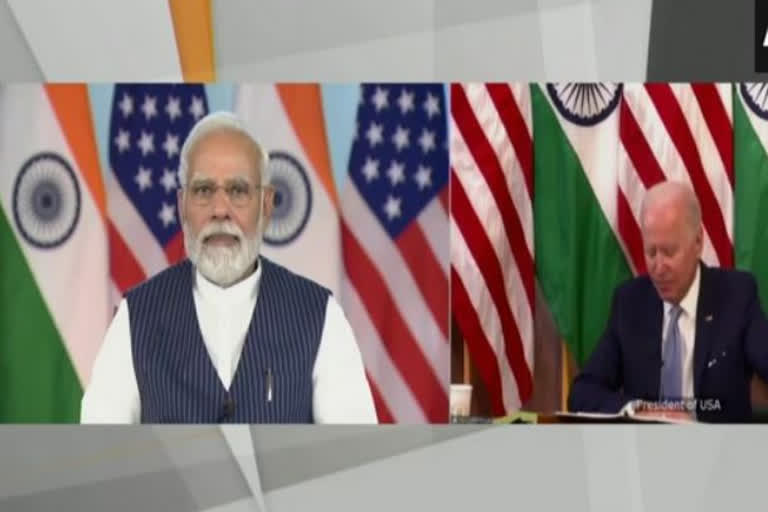New Delhi: The biggest takeaway of the agreements inked at the 4th India-US Ministerial 2+2 Dialogue on April 11, is the rather unusual scenario that the world’s two biggest democratic nations disagree on Russia in the aftermath of the latter’s military action on Ukraine that began on February 24 but strongly agree on a strong architecture and alliance to counter an increasingly powerful and assertive China.
No R-word
That India’s ‘strategically autonomous’ position on the Russian action in Ukraine prevailed can be gauged by the fact that Russia was not mentioned by name even once in the carefully-constructed 4,312-word joint statement issued. This was strange in view of the fact that the Russia-Ukraine conflict would have been among the top agenda items in the dialogue.
Nor did the statement go beyond the cursory “worsening humanitarian crisis in Ukraine”, seeking an “immediate cessation of hostilities”, and “condemnation” of civilian deaths in Ukraine. The groundwork to the joint statement was first laid by a virtual meeting on Monday (April 11) between PM Narendra Modi and President Joseph Biden followed by the dialogue between US secretary of state Antony J. Blinken and secretary of defense Lloyd J. Austin III with their respective Indian counterparts defence minister Rajnath Singh and external affairs minister S. Jaishankar.
Oil and Rights
But two sore points stood out—India’s refusal to stop oil imports from Russia and US’ criticism of human rights in India. The context was exemplified by what foreign minister Jaishankar had said after the 2+2 dialogue while responding to a query during the joint briefing on Monday: “If you are looking at energy purchases from Russia, I would suggest that your attention should be focused on Europe. We do buy some energy, which is necessary for our energy security. But I suspect looking at the figures, probably our total purchases for the month would be less than what Europe does in an afternoon.”
Pressed on the issue, White House Press Secretary Jen Psaki could only kowtow the Indian position when she said: “I’ll let Prime Minister Modi and the Indians speak to that. Again, it’s 1 to 2 per cent (Indian oil imports from Russia) at this point in time. They (India) import 10 per cent from the United States. It is not a violation of any sanctions or anything along those lines… The (oil) imports from the United States are already significant—or much bigger than the imports that they get from Russia.”
The Indians also glossed over the US’ criticism of the rights situation in India with both ministers—Singh and Jaishankar—preferring to turn a deaf ear to the accusation. Blinken had said on Monday after the dialogue: “We are monitoring some recent concerning developments in India including a rise in human rights abuses by some government, police and prison officials.”
